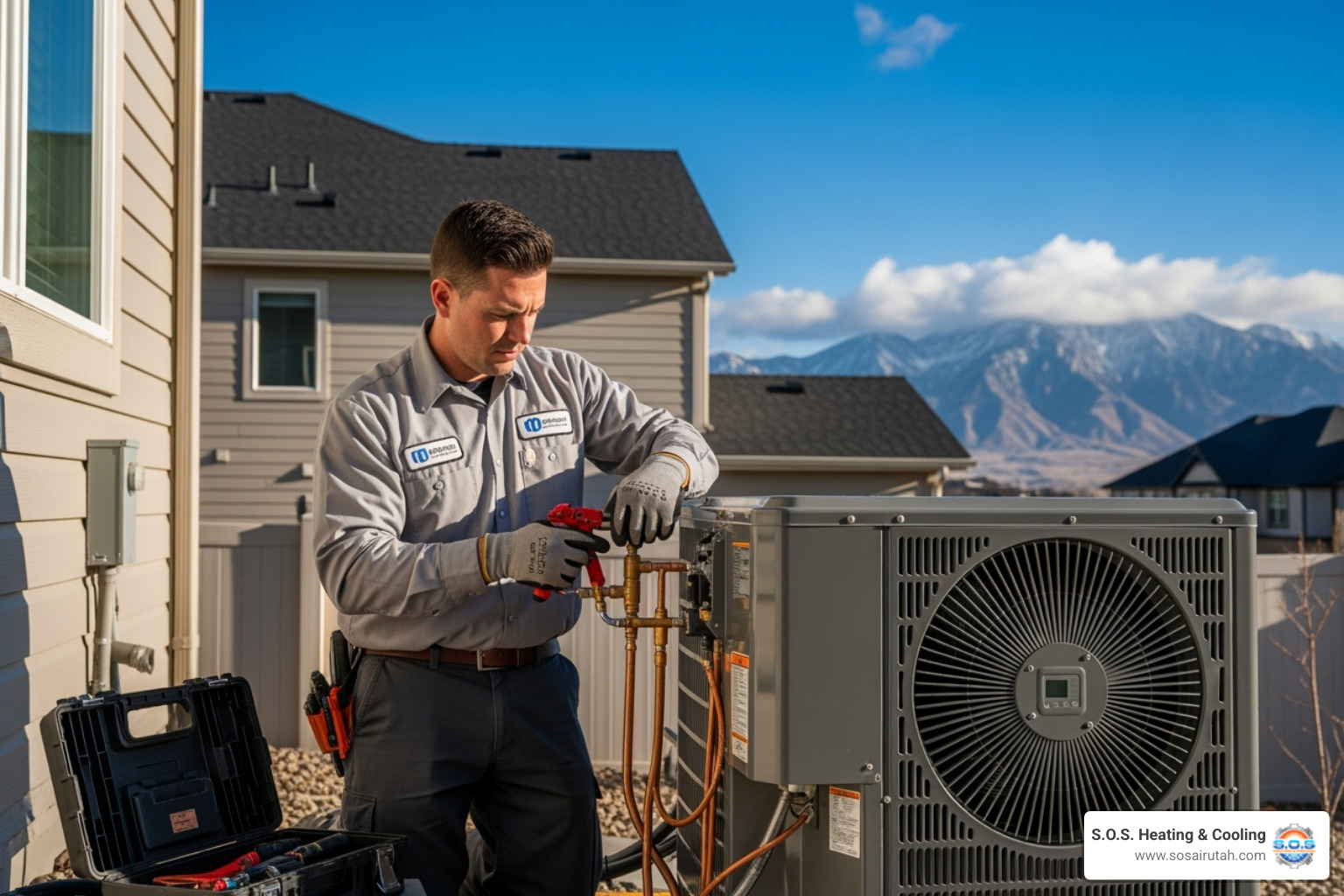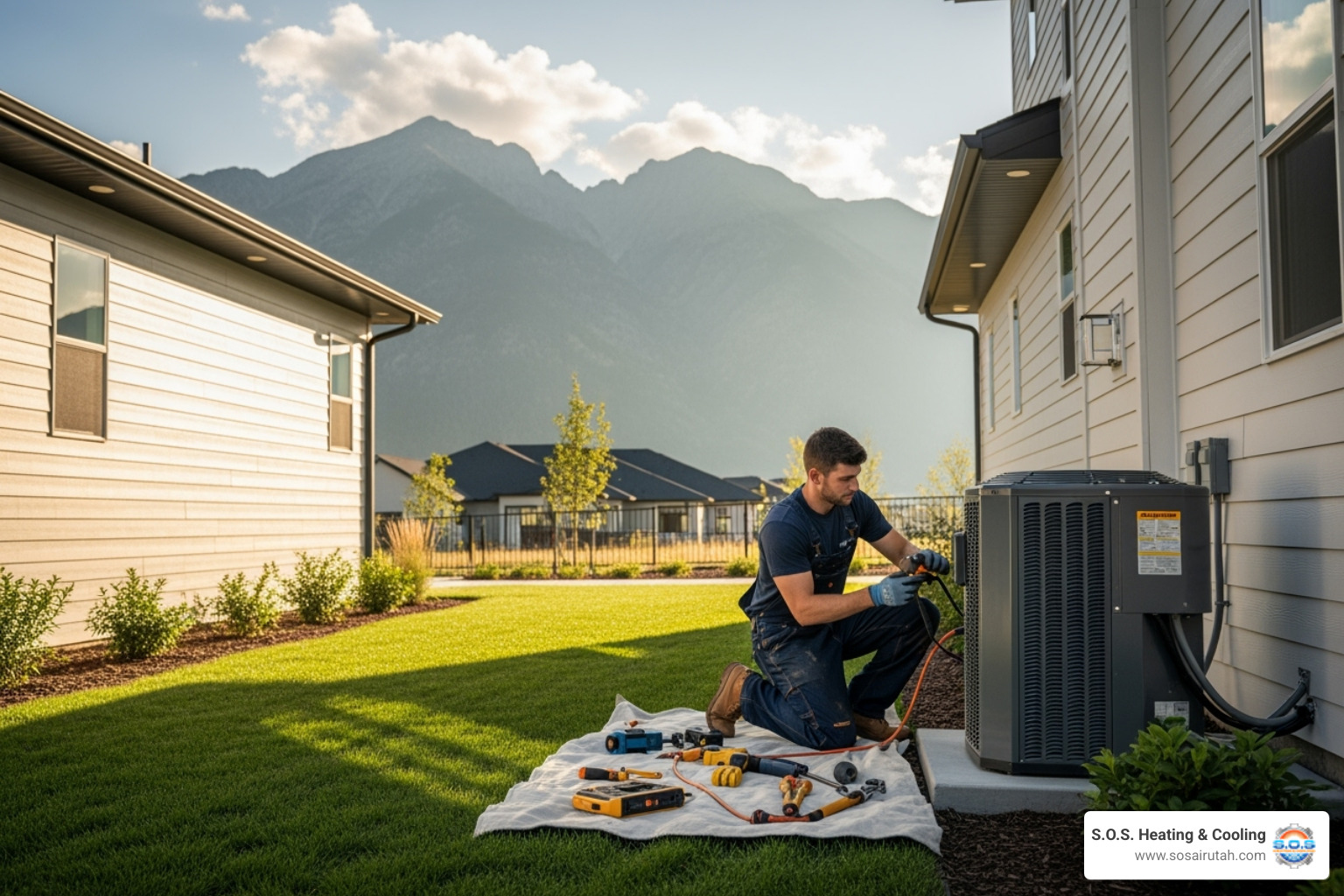
When the summer heat peaks in Farmington, your air conditioner becomes more than a luxury—it’s necessary to stay comfortable. That is why it is frustrating when your AC stops working the way it should, especially when the problem is not mechanical but electrical. Electrical connection issues in AC systems can be tricky to notice at first because they often do not show up until your unit starts acting up.
You might hear a sudden clicking noise, notice your system turning on and off by itself, or find that the cooling is inconsistent. These types of problems can lead to poor performance, system failure, or even safety concerns if not addressed quickly. Homeowners might overlook these as minor annoyances, but ignoring them can eventually lead to costly repairs or full system replacement.
Identifying Electrical Connection Problems in Your AC
When an AC system in Farmington starts behaving abnormally, one of the first things to consider is whether it is having electrical problems. These do not always stop your system from turning on, but they can affect how well it runs. Spotting possible signs early can prevent bigger complications down the road.
Here are common signs of electrical connection trouble:
- The AC turns off and on by itself without reaching the set temperature.
- You hear sharp click sounds when the unit starts or stops.
- Room temperature seems uneven despite the thermostat settings.
- You smell something burning or notice scorched areas around your AC unit's electrical connections.
- Lights flicker slightly when the AC starts up.
Each of these signs can point to poor, loose, or deteriorated wiring. For instance, if your air conditioner keeps restarting but does not cool, it could be caused by a damaged wire interrupting the power flow. These issues affect not just comfort. They also strain your AC unnecessarily, lowering its lifespan while increasing energy usage.
Some residents report these kinds of symptoms and think it is a thermostat issue or a faulty fan. But the root problem often lies in the wiring or connectors, especially in older units or systems exposed to heat and dust for prolonged periods.
Common Causes of Electrical Connection Problems
Understanding what leads to electrical connection failures can help homeowners avoid bigger problems. While some causes are related to the age of the system, others develop due to daily use, weather shifts, or previous repair work.
Here are the most common causes:
1. Loose or disconnected wires – Vibrations from years of operation can loosen wire terminals or connectors inside the AC unit. When these connections wear out, power delivery becomes inconsistent.
2. Corroded terminals – Exposure to moisture or humidity may cause oxidation on metal terminals. Corrosion prevents electrical current from flowing properly.
3. Worn-out capacitors or relays – Electrical parts like capacitors and contactors are responsible for starting your compressor and fan. Over time, these parts can degrade or short out.
4. Rodent damage – In some homes, especially near open fields or wooded areas, pests like mice or squirrels may chew through wires inside the outdoor unit.
5. Weather-related wear – In Farmington, hot, dry summer days followed by cool nights can expand and contract materials, weakening connections over time.
6. Installation errors – If your AC was installed by an unverified technician, it might have wiring that is incorrect or poorly connected. Even one small mistake can affect performance and safety.
A homeowner in Farmington once shared how their AC struggled to stay on during peak summer hours. After multiple power surges and random shutdowns, our technician found the wire leading to the compressor had corroded badly due to weather exposure and lack of sealing. A full replacement and sealant corrected the issue, and the system stabilized.
Knowing what causes an electrical problem makes it clear why these are not quick-fix issues. They often involve inspecting internal components, checking connections, and testing voltage—all tasks that require experience and the proper equipment.
How Our Professionals Diagnose and Fix Electrical Issues
Electrical connection issues in an AC unit can range from minor wiring problems to larger issues with internal components. Diagnosing the exact fault requires both training and the right tools. That is why it is important to let our experienced technicians handle it. Guesswork is not safe when dealing with live electrical systems.
When our technicians arrive at a home in Farmington, they start with a full inspection of the indoor and outdoor units. They look for signs of damaged wires, corrosion, or loose fittings. After that, they use multimeters and circuit testers to check for voltage drops or failed segments in the circuit. These steps help determine whether the problem is related to the thermostat, control board, or capacitor.
Once the issue is identified, the repair process begins. For loose connections, the solution might involve tightening or replacing terminal screws. If wires are frayed or chewed, they are replaced. We also take steps to keep pests away from those areas. If a specific component—like the contactor, capacitor, or relay—is faulty, a new replacement part is installed. Our technicians test each installation to ensure everything works as expected.
Safety is a top priority during each service. Electrical components are de-energized before repairs begin, and the full system is tested after work is complete. This confirms proper operation under normal conditions and helps prevent further issues. Some homes in Farmington with older AC units also need small upgrades, especially for outdated or out-of-spec parts.
Preventive Measures and Maintenance Tips
While electrical connection problems can be repaired, it is better to stop them before they become larger concerns. Regular maintenance can catch and prevent these problems early. Simple upkeep by the homeowner, along with scheduled service visits, can extend the life of your AC system.
Here are a few tips homeowners in Farmington can follow:
- Keep the area clear around the outdoor condenser to avoid dirt, leaves, and pests interfering with wiring.
- Look out for exposed or damaged wires throughout the season.
- Do not use extension cords or plug adapters with AC units. They are not rated for that kind of demand.
- If your thermostat stops responding or shuts the system off too soon, have it evaluated.
- Schedule professional maintenance once a year, ideally in late spring before summer heat sets in.
During professional maintenance, our technicians clean and tighten electrical components, inspect the board and fuses for wear or damage, and verify voltage levels. These tasks are quick to perform but can prevent major problems from forming during the hottest weeks of the year.
One family in Farmington scheduled a maintenance visit before a forecasted heatwave. Their technician found a failing capacitor, replaced it, and likely prevented their system from failing during high temperatures. This type of service can keep your cooling reliable and save future repair costs.
Ensuring Reliable AC Performance in Farmington
Electrical problems often build up slowly and can go unnoticed until they disrupt your comfort. But by watching for changes in system behavior, correcting issues early, and allowing our technicians to perform detailed diagnostics, you can protect your home and your AC unit.
Your air conditioner should run consistently and keep your home cool. But even a small loose connection or damaged wire can cause cycling problems, component stress, or permanent failure. Whether the concern is a frayed control wire or a failing start capacitor, early action prevents long-term damage and unnecessary expenses.
If your AC in Farmington is not running as expected or shows warning signs like flickering lights or uneven cooling, contact us immediately for expert service. Reliable electrical connections are key to long-term indoor comfort throughout the season. Early diagnosis and professional repairs help avoid discomfort and keep your system working when you need it most.
Ensuring your home stays comfortable and energy-efficient starts with a dependable cooling system, and professional AC installation in Farmington can provide the solid foundation your system needs. Trust S.O.S. Heating & Cooling to deliver expert service and peace of mind through regular evaluations and long-term solutions. For a quick estimate or to book a service visit, please contact us today.
Explore Our Latest Insights and Updates in Plumbing Services

Stay Productive: Top Commercial AC Services in Utah

Budget-Friendly Breeze: Your Guide to Affordable Air Conditioning in Utah

The Ultimate Guide to HVAC Maintenance in Utah






.avif)